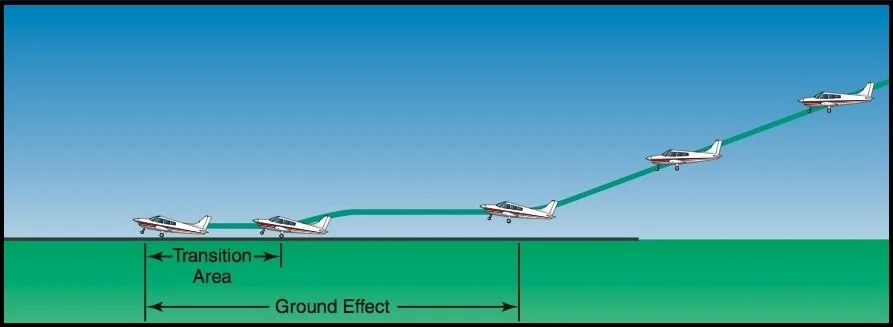Ground Effect
When flying within one wingspan length above the ground, the surface restricts the formation of wingtip vortices, thereby reducing induced drag, which results in a reduced total drag and better airplane performance. Less thrust is needed to maintain airspeed and generate lift. Therefore, under-powered airplanes may be able to maintain flying speed while in ground effect, even if they cannot maintain that speed in free air, well away from the ground.
An airplane leaving ground effect will:
1. Require an increase in angle of attack to maintain the same lift coefficient.
2. Experience an increase in induced drag and thrust required.
3. Experience a decrease in stability and a nose-up change in moment.
4. Produce a reduction in static source pressure and increase in indicated airspeed.
You will feel a sagging in climb-out performance as the airplane flies out of ground effect on takeoff. You will need to increase the angle of attack to generate the same amount of lift as you fly out of ground effect. This should be borne in mind whenever operating on short runways or on a runway which finishes on the edge of a cliff.
Ground effect may allow the airplane to become airborne before reaching the recommended takeoff speed—Don’t force it to become airborne at too low a speed.
When in ground effect during landings, it is important at flare height to make sure that the power is throttled back so that speed can be lost and the airplane will not keep floating down the runway.

